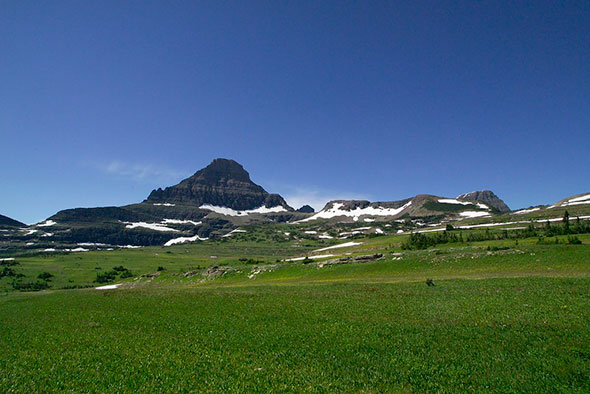Last updated: December 30, 2020
Lesson Plan
Meadow Madness

- Grade Level:
- Upper Elementary: Third Grade through Fifth Grade
- Subject:
- Science
- Lesson Duration:
- 30 Minutes
- Additional Standards:
- NGSS 3-LS4-4. Make a claim about the merit of a solution to a problem caused when the environment changes and the types of plants and animals that live there may change.
Essential Question
What is habitat succession?
Objective
Students will (1) explain habitat transition from a pond habitat to a meadow habitat (2) identify wildlife in a meadow habitat and imitate animal behavior, and (3) recognize that conditions within habitats are continually changing.
Background
The purpose of this activity is introduce students to a beaver meadow habitat in W-GIPP.
Optional park visit activity.
Preparation
- 2-4 pencils and a 3x5 card for each student (can cut 3x5 cards in half to save paper).
Procedure
1. What is habitat succession? (the orderly, gradual, and continuous replacement of one habitat by another) Ask the students to summarize the beaver-stimulated habitat succession journey they have taken thus far. 2. Ask the students to speculate on what habitat replaces the pond habitat, explaining their reasoning. (See Beaver Natural History section for more information)
3. Ask for 2 volunteer recorders. Give each student a pencil and stack of 3x5 cards, so that the number of cards matches the number of students and each recorder has half that amount.
4. Ask the students to begin naming animals that live in or frequent a meadow habitat, and how the meadow provides a suitable habitat for each animal. Have each recorder write the name of each animal neatly on a card. Continue naming and recording animals until there are no more cards left. Each animal should have been listed on a card by each recorder, so that there are two animal cards for each animal named. (If you have a large group, you may wish to choose 3 or 4 recorders for each animal, so that you don’t run out of animals.)
5. Ask the recorders to shuffle their cards and pass one out to each student face down, so that no one sees the card but the student receiving it.
6. On signal, the students begin acting out the sounds, shapes, and typical movements of their animal, with the intention of attracting their mate. They can make as much noise as they like, but talking is not allowed. Wander about and assist slow-to-start individuals and groups that have gathered together in too large a number. The game eventually ends in happy reunion, and may be repeated after collecting and reshuffling cards, depending on time and group interest.
Variations and Extensions:
Repeat the process and the game with the opening being a logged area. How is this area different and the same as a beaver meadow? Are there different animals living here? Repeat with a burned-over area.
Assessment Materials
Is the process of beaver succession complete? (Eventually trees begin to re-invade the dry ground, and meadow reverts to forest once again.) Encourage the students to predict this process. Ask the students to summarize the entire process of beaver succession. Review the different types of wildlife found in a forest, pond, and meadow habitat. Can beaver pond succession be interrupted? By who? How?
Contact Information
Email us about this lesson plan
